There are two neighborhoods in Salvador that just about every visitor gets to know. One is Pelourinho (Pillory), and the other is Barra (Bar, as in reef, and pronounced “BA-ha”), which has a number of hotels and the two beaches closest to the city center (with the exception of some very small beaches frequented only by very local people).
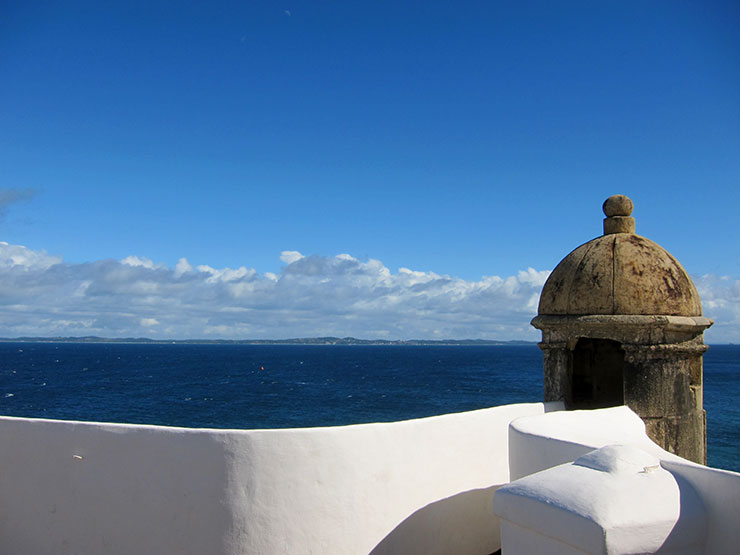
A couple of other forts in the area — on either side of the praia (beach) of Porto da Barra, a few hundred meters to the west of the Farol — serve as museums too. These are the Forte de Santa Maria, to the left as one looks out to the beach and water, and the Forte de São Diogo to the right. The Forte de Santa Maria is dedicated to the French photographer Pierre Verger, who over a period of decades captured the essence of life in Bahia in lovely and moving black & white photographs.

The Forte de São Diogo is dedicated to another estrangeiro who became quintessentially Bahian, Hector Julio Paride Bernabó, far better known as Carybé (another arrival to Brazil — after Caramuru — likewise named for a fish). Carybé, transplanted from Argentina and who became a citizen of Brazil, was a painter and sculptor who like Verger channeled into his art the essential qualities of African life in Bahia.
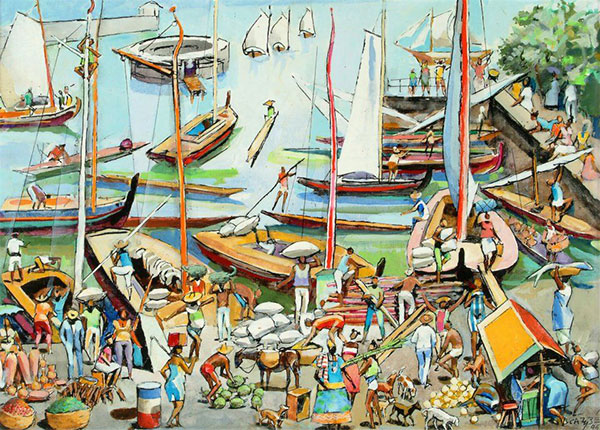
There is, of course, a lot more to Salvador than this, including:
Ladeira de Conceição — A ladeira is a sloping street, and the Ladeira de Conceição slopes down from the Praça Castro Alves (named for poet Antônio Frederico de Castro Alves) to the Igreja da Conceição in the lower city. The street is lined with workshops, metalworking and stonecutting, set into arches under the Ladeira da Montanha, which runs above, and bregas.
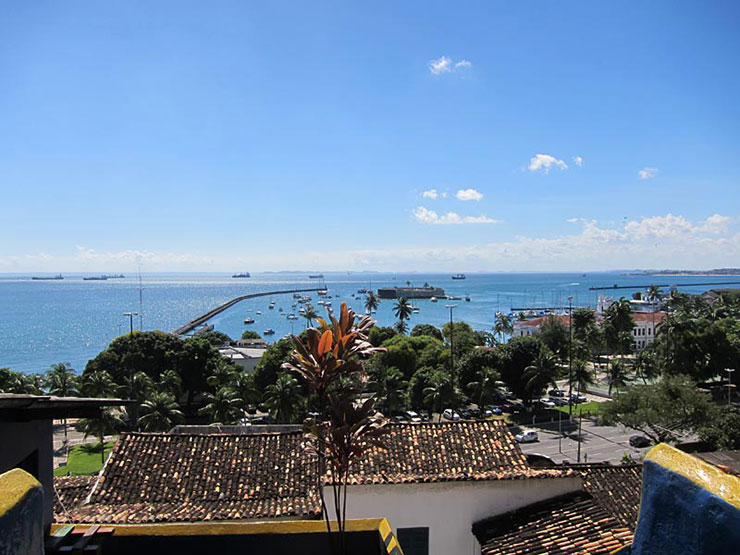
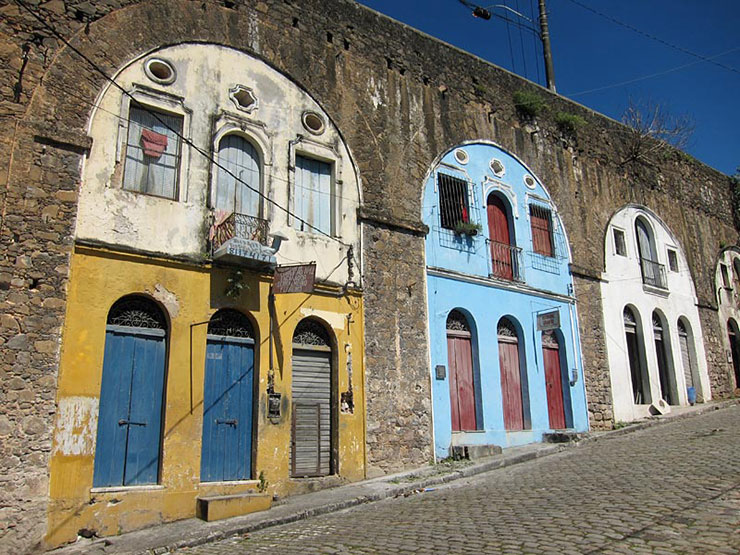
Twenty-three of these arches were built, completed in 1879, in order to support the Rua da Montanha, now called the Ladeira da Montanha, a more gently inclined communication between the upper and lower cities. The Ladeira da Montanha also became well-known for the meretricious establishments which grew up along its 894 meters, all gone now.
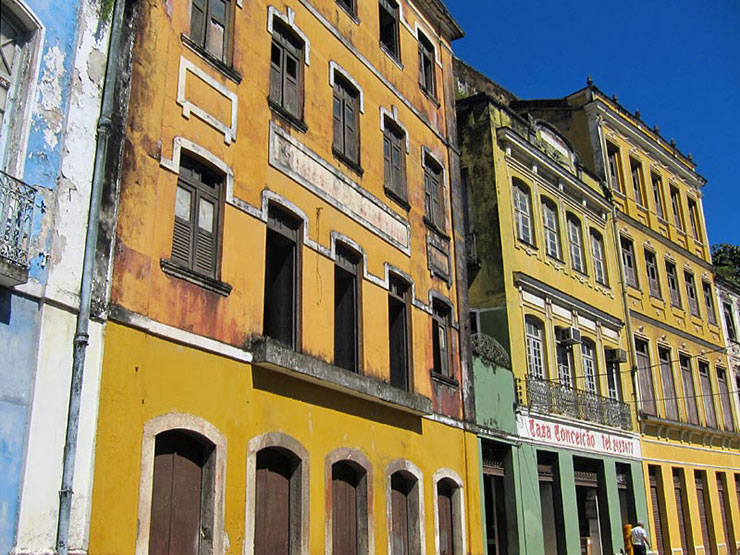
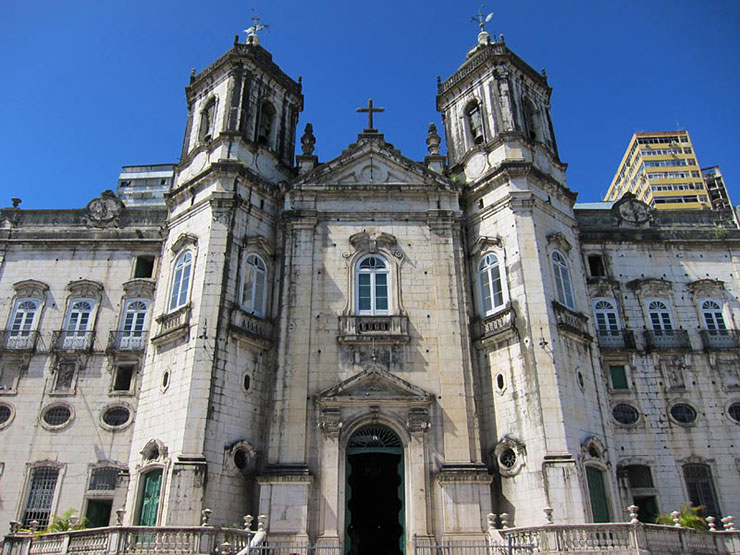
Solar do Unhão — A solar is a manor house, and there certainly aren’t any of those in the vizinhança (neighborhood) of Solar do Unhão, the area being named for the Solar do Unhão proper, itself named for one of the early (1692 and thereabouts) owners (Pedro de Unhão Castelo Branco, who held the post of provedor-mor dos defuntos, responsible for looking after the finances of the dead with the idea that the Portuguese Crown would be sure to get what was “theirs”). In the nineteenth and twentieth centuries the house served as the locale for a series of factories (including the manufacture of snuff) and then warehousing (reasons for which the original interiors are completely gone), and in the sixties the buildings were refurbished by the Bahian state government.
Nowadays the Solar houses Salvador’s Museu de Arte Moderna (MAM), and the grounds are the location of Saturday nights’ Jam no Mam, a big jazz jam session which brings in hundreds of people (from 6 to 10 p.m. or so).
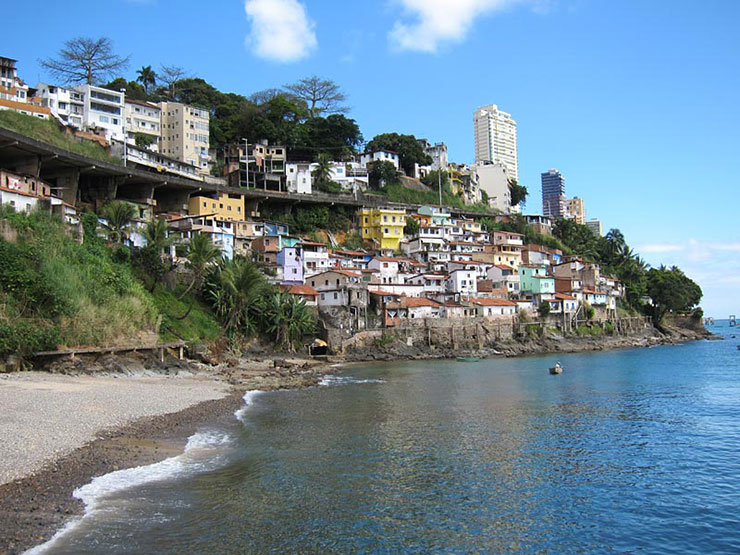
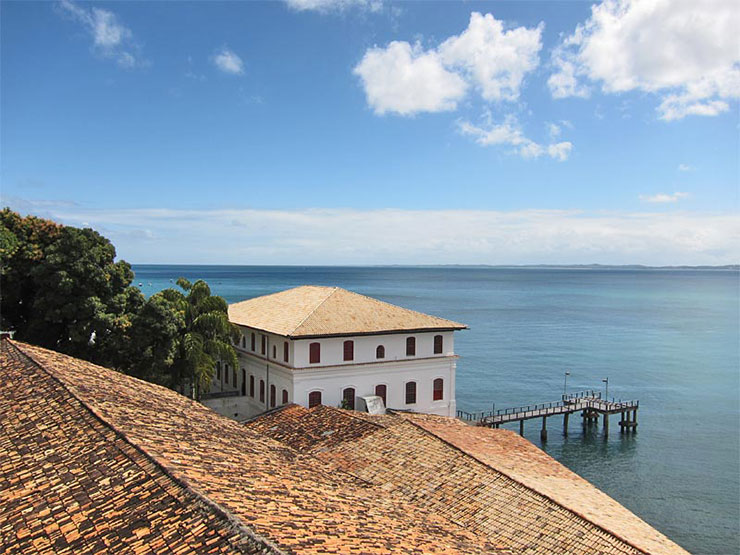

Itapoan — mentioned in the “Beaches & Islands” section. An interesting seaside village (with several alternative spellings). You can get great acarajés from Cira (the Baiana’s name), across from a praça that’s very lively at night (the Baiana next to Cira is not as famous, but her acarajés are great too).
Itapoan runs the gamut from poor to rich, has a good beach and a great feira (open-air market). It also has samba on the seafront all through the week.
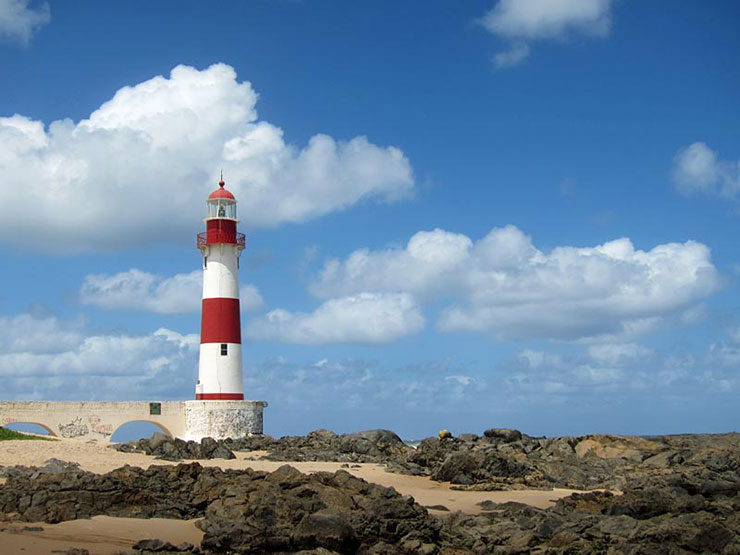
Itapoan is where Dona Flor (from the Jorge Amado novel Dona Flor and Her Two Husbands) gave up her virginity to the scoundrel who was to become her first husband. It was also home to poet/playwright/lyricist Vinícius de Moraes for a number of years, and singer/composer Dorival Caymmi. There’s samba on Friday nights in Itapoan at the bar of the Popular Cabocla…
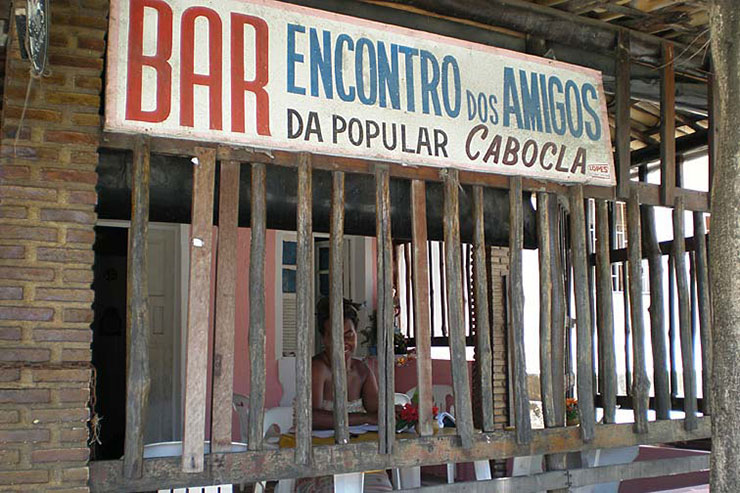
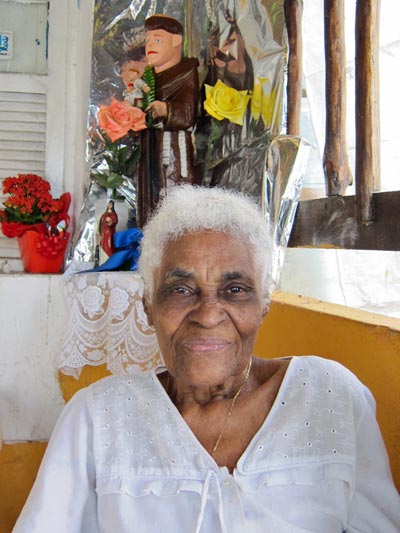
Itapoan was also the location of quilombo Buraco do Tatú (Armadillo Hole), established around 1743 and destroyed twenty years later. (In Angola a kilombo is simply a village; in Brazil these villages were established by runaway slaves and so “quilombo” always carries this connotation.)
Liberdade (Liberty) — low-middle class to poor. It’s kind of the Harlem of Salvador in that it is a huge, bustling neighborhood with a rich cultural background. A lot of capoeira came out of this area, and Liberdade is home to the African blocos (blocos afros) Ilê Aiyê and Muzenza.
Speaking of Ilê Aiyê, the group’s provenance is a specific area of Liberdade called “Curuzu” (their headquarters being situated on the Ladeira do Curuzu)…and given this it is fitting that Curuzu came into existence as a quilombo.
Boca do Rio (Mouth of the River) — on the Atlantic side, is not quite as far out as Itapoan. It is home to capoeira mestres Nô, Lázaro, and Jelon Vieira, and is for the most part lower-middle class to poor. Raymundo Sodré, master of the essential deep-roots music of Brazil’s Nordeste (Northeast) also lives here.
Engenho Velho de Federação (Old Mill of Federation) — is a mostly poor neighborhood set on the territory of what was a sugarcane plantation (hence the engenho, or mill, which served to process the cane). What this neighborhood lacks in material prosperity it more than makes up for in culture, Engenho Velho de Federação being home to 23 houses of candomblé (including Bogum [Zoogodô Bogum Malê Rundó] and Casa Branca [Ilê Axé Yá Nassô] ).
Cabula — is a neighborhood named for a quilombo which was finally destroyed in 1807, the quilombo’s name deriving from a rhythm used in candomblé angola (brought and elaborated by the the Bantus, first group of slaves to arrive in Bahia). This area — the character of which ranges from poor to middle-class, numerous concrete apartment buildings and houses having been built in the 1970s — is home to terreiros de candomblé Ilê Axé Opô Afonjá and Bate-Folha.
Dois de Julho (2nd of July) — is the area around Largo (Place) Dois de Julho, close to the city center. This is where Dona Flor’s first husband Vadinho died dancing samba during Carnival (in the Jorge Amado novel Dona Flor and Her Two Husbands), and one of the streets in this area — Rua do Sodré (“Sodré” is a Portugese surname) — is where Dona Flor lived with both her first and second husbands and where she had her cooking school. The junction of Rua Carlos Gomes and Rua do Cabeça (which is one of the access streets to Dois de Julho; “Rua do Cabeça” is “Street of the Head, or Head Street”, which in this sense — given the masculine “do” rather than the feminine “da” — denotes the head of something as opposed to a gory head unattached) was the fictional location of Dona Flor’s second husband’s pharmacy. That pharmacy — like so much local color in Jorge Amado’s fiction — was based on an actually existing pharmacy (Amado locating his fictional establishment upon the site of the real one — Pharmácia Luz — which is now a Chinese-owned pastel shop).
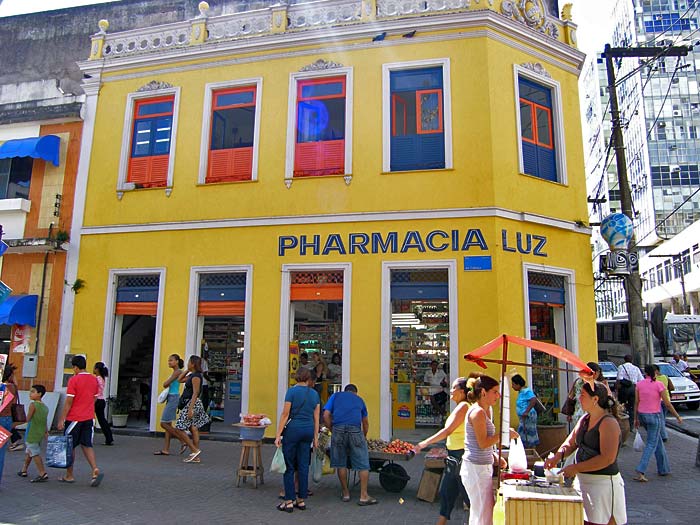
During the time in which Amado’s novel was set (early 1940’s I believe) the area was, as described by Amado himself in the novel, lower middle-class, and for the most part it continues to be so today. At the top of Rua do Sodré* — which leads from Dois de Julho down to the Museu de Arte Sacre (Musem of Sacred Art, in the church of Santa Tereza) — are several small and very typically Bahian bars, one of which serves infusões and where my friends and I like to sit and observe the local life. As sunset approaches this area becomes very questionable.
* (The street was named for Jerônimo Sodré Pereira, of Santo Amaro, Bahia — a town located at the north end of the Baía de Todos os Santos — an area in which Sr. Pereira owned sugarcane plantations. He built a mansion on this street, the edifice nowadays housing a public school.
Around the corner, on the Ladeira de Santa Tereza, No. 7, for many years lived somebody who had been purchased as an African (of an ethnicity now known as Yorubá, although the term wasn’t used in his time; here in Bahia the term for these people was Nagô) by Jerônimo, Domingos Pereira Sodré, whose life and history have been so capably delineated and set forth by João José Reis in his book Domingos Sodré, um sacerdote africano (Domingos Sodré, an African Priest).
Somewhere along the line of these wealthy planation owners and their intermingling with African women was sired the progenitor of the family of Raimundo Nonato Pereira Sodré, Raimundo Sodré, that magnificent repository of Afro-Bahian music.)
Preguiça (Laziness) — The far end of Rua do Sodré (from Dois de Julho) runs into the Ladeira da Preguiça (a “ladeira” is a sloping street), which in turn winds its way down to the lower city. The ladeira (the descending or ascending of which would nowadays invite robbery of anybody obviously a tourist) was in Salvador’s early years the principal thoroughfare for the transportation of arriving cargo from the lower city to the upper. Slaves did much of this work (their compatriots in this being burros and donkeys) and in return for their backbreaking labor they were made to constantly endure cries and accusations of laziness. “Ladeira da Preguiça” is the title of a song Gilberto Gil song wrote for Elis Regina in 1971.
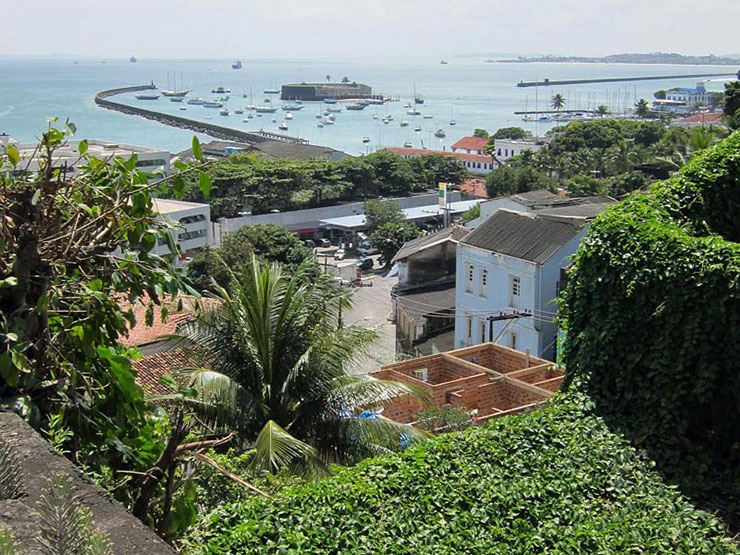
Saude (Health) — is an old, interesting, somewhat crumbling neighborhood in the style of Pelourinho but with no commercialization for the tourist trade.
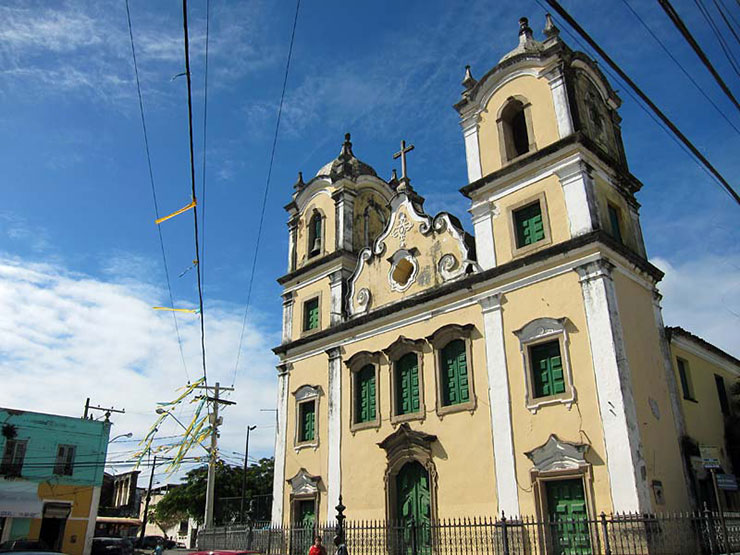
From Pelourinho, Saude lies just across from the Baixa dos Sapateiros (Cobbler’s Low Area, so called because it traces the divide between the hills of Pelourinho and Saude and because of a common trade once practiced there). Nowadays the Baixa dos Sapateiros is given over to cheap shops with hawkers calling out to potential customers as they pass on the sidewalk, but in the 1930’s the area — or presumably a lovely young thing in the area — inspired the great Ary Barroso to write what has become Bahia’s most enduring “theme song”, Na Baixa do Sapateiro (“In the Baixa do Sapateiro”; for some reason the song title is in the singular).
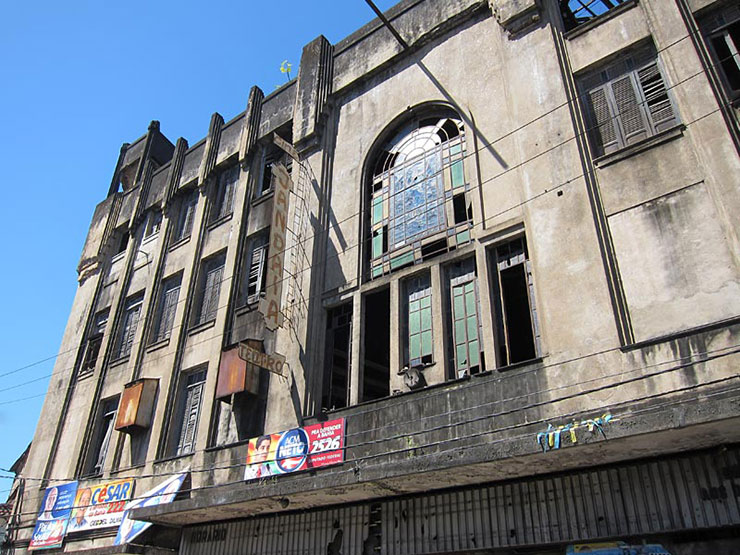
The Cine Janadaia in the Baixa dos Sapateiros is where the film which inspired the adoption of Indian garb — and thereafter the adoption of Gandhi’s name — by afoxé Filhos de Gandhy, was shown in 1949 (the film was Gunga Din). Carmen Miranda sang here in 1932, witnessed by an eighteen-year-old Dorival Caymmi (who would later figure so importantly in Carmen’s adoption of stylized Bahiana fashion, following her recording of his O Que É Que a Baiana Tem?).
Moving back in time, before the Baixa dos Sapateiras was a street it was a stream called Rio das Tripas (Tripe River)…where the unwanted refuge of Salvador’s slaughterhouse district (Barroquinha) was tossed (Barroquinha’s slaughterhouses are long gone, the area since having become a city bus terminal).
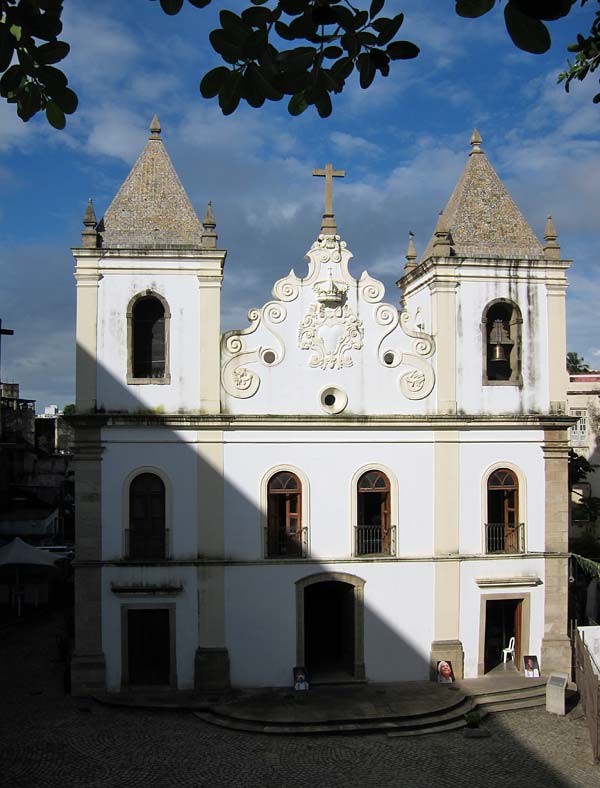
Barroquinha was named for a church (Nossa Senhora da Barroquinha) behind which, incidentally, the precursors to Salvador’s oldest continually existing houses of candomblé were founded (Casa Branca and Gantois). The church was also the seat of the Confraria de Nossa Senhora da Boa Morte (Sisterhood of Our Lady of the Good Death) — a group mixing elements of Catholicism and candomblé — which subsequently decamped for the town of Cachoeira (where their festa is held yearly, in August).
Ribeira — Ribeira has several senses, one of which is a coastal area where the water completely washes out at low tide, allowing the maintainance and repair of boats. There was such an area where the Segunda Distrito Naval (Second Naval District) is now located…
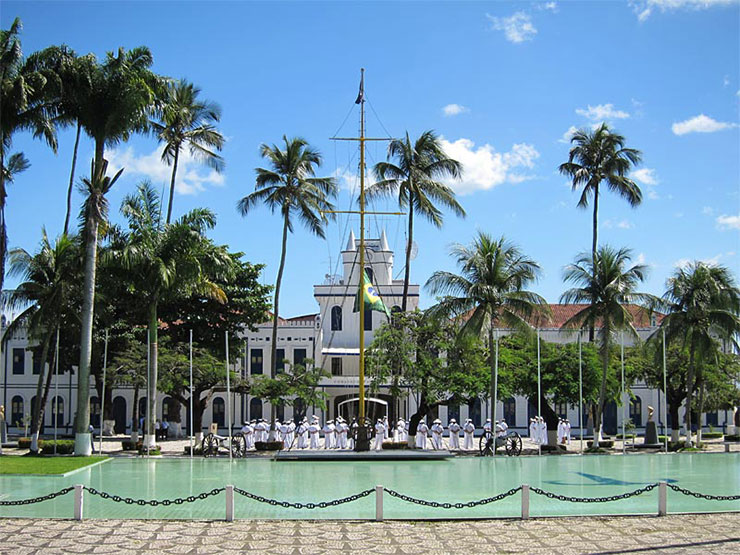
…an area which at one time was known as Ribeira das Naus (a nau being a three-masted ship). The name ribeira came to denote this entire part of the city (nowadays known as comércio; praia, or beach, was also used to denote this area, from which is derived the last part of the full name of the church Igreja da Nossa Senhora da Conceição da Praia).
Space being insufficient here for the volume of work to be done, a similar enterprise was set up on another ribeira on the peninsula of Itapajipe (alternatively spelled “Itapagipe”), with the name Ribeira dos Galeões, and this is the area today known as Ribeira.
Saturdays, Sundays, and Mondays are big days on the beaches and in the bars and restaurants of Ribeira, Mondays because this was the day-off for a large contingent of workers at the Pólo Petroquímico industrial park in Camaçari, to the north of Salvador. Cozido, a vegetable-and-meat stew, is traditional Monday fare in the beachside restaurants.
Segunda-Feira Gorda (Fat Monday) is a festa popular in Ribeira, falling on the Monday following the Lavagem do Bonfim (which always falls on a Thursday).
Pituba/Itaigara — are two neighborhoods which in fact merge to form one, and doing likewise with Caminho das Árvores (Trail of the Trees) they form a triumverate of middle and upper-middle class Salvador, home to doctors, engineers, and lawyers. These areas are usually not interesting to visitors seeking local flavor, though even here one may see rodas de capoeira in open areas in the evenings.
Barris (Barrels) — Hey! That’s where I live now! I like it because it’s right smack in the center of the city and close to a lot of good stuff. Plus it’s quiet, in spite of being a three-minute walk to Carnaval. The name comes from the fact that people would fetch water (or send to have it fetched) — in barrels — from a freshwater spring located in a valley between what is now Barris and what is now the neighborhood of Tororó (that valley is now the Lapa city bus terminal). Barris was home to one of Bahia’s principal slave traffickers, the Marquês de Barbacena, whose once sumptuous mansion became a crappy public school, now closed down. The house passed from the Marquês’s hands to those of another slave trafficker, Domingos José Martins, who in 1806 hosted Napoleon Bonaparte’s youngest son Jérôme in the house.
Tororó is is another central neighborhood, which for some reason (or perhaps for no reason at all!) is fertile ground for great sambistas. Paulinho do Reco has lived there all his life…
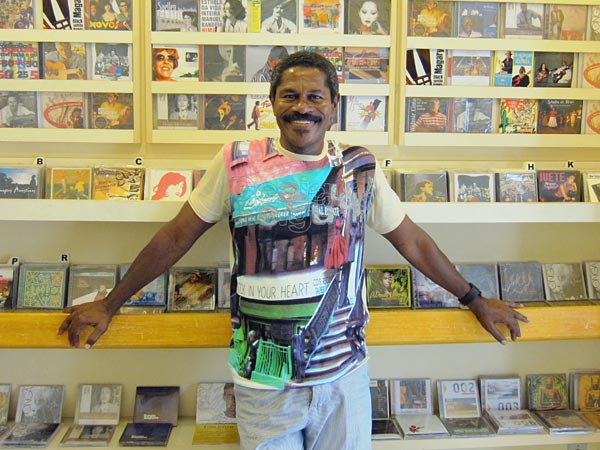
Sambistas Walmir Lima and Ederaldo Gentil are also from Tororó. Below, Ederaldo sings his O Ouro e a Madeira (The Gold and the Wood)…
And below is Mariene de Castro’s version of Walmir Lima’s Ilha de Maré (Tide Island). Walmir is 86 years old now and is still going strong, singing his sambas and the tasteful cream of everybody else’s.
Garcia is just across the way from Tororó, named for a family which once owned the land and extending from the working-class end around the public square to the middle-class end at Campo Grande. Garcia is home to one of Salvador’s premier sambistas, a 5 foot 4 inch package of dynamite by the name of Clementino Rodrigues but generally known as Riachão (riachão is “creek”…when Riachão was a small boy he was known for always being in fights, one day one of the older folks asking him, using an adage common to the area, “Are you a creek that can’t be crossed?” And he’s been Riachão ever since). Three of Riachão’s compositions were recorded by the immortal Jackson do Pandeiro. Below is the trailer for a documentary on Riachão…sweet!
Santo Antônio (Saint Anthony) — is pretty much of an extension of Pelourinho, though much more given to residential living. Santo Antônio is part of Salvador’s Centro Histórico and and most of the houses date from the colonial era. At the far end from Pelourinho is the Largo (square) de Santo Antônio, banked by a church (Santo Antônio of course) and a fort (the Forte de Santo Antônio, in keeping with the trend), the fort being home to a lot of capoeira angola. Gilberto Gil lived in Santo Antônio, and decades before him Josué de Barros, who would “discover” Carmen Miranda and introduce her into the world of professional singing.
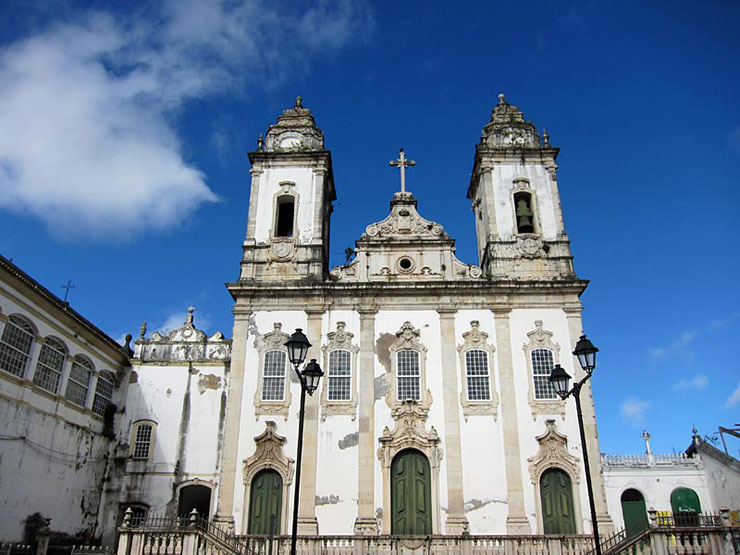
Rio Vermelho (Red River) — is where the great Festa da Yemenjá (female deity of the sea) takes place on February 2nd. It was home to the writer Jorge Amado and is currently home to singer Gal Costa (who bought her house overlooking the Praia da Paciéncia — Patience Beach — from musical colleague Caetano Veloso). Lots of bars and restaurants.
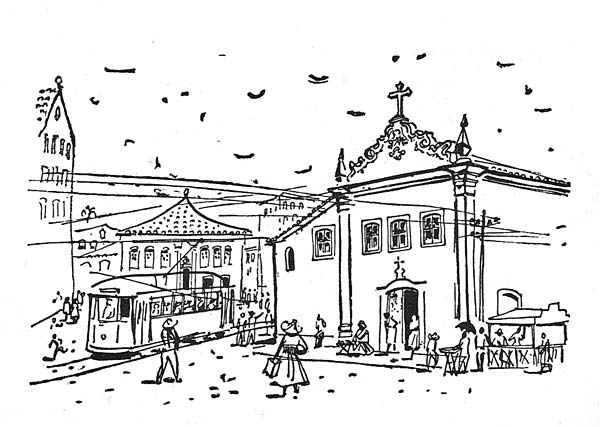
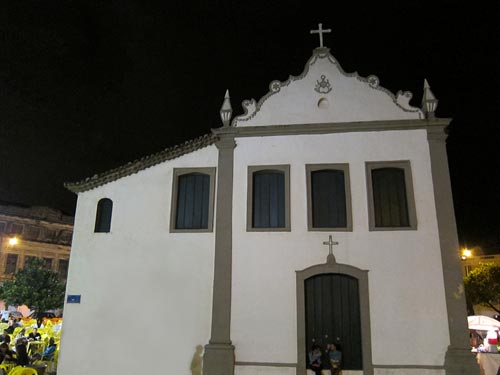
The name comes from a “river” giving onto the Atlantic Ocean (I use quotes because what was at one time a small river has become a concretized gutter), the name of this river being “Camurujipe”, a Portuguese twisting of the original Tupí “Camarajibe” — or “River of the Camarás”. Given that a camará is a small red flower which in earlier times grew in abundance here in Salvador, a more accurate rendering would be “Rio das Flores Vermelhas” (“River of the Red Flowers”), but that’s quite a mouthful of syllables.
Ondina — Carnival ends here (see the “Carnival” section), several kilometers up from Barra. Ondina has a nice urban beach and some of the big, standard-style hotels (Othon Palace, etc.). Up on a bluff overlooking Ondina proper is the Alta da Ondina (Ondina Heights) with a lovely, windswept, and almost lonely-feeling view of the Atlantic and city below. A large part of the Federal University of Bahia campus is in Ondina, as well as the city zoo.
Subúrbio (Suburbia) — is, as the name implies, not a single neighborhood, but comprises rather the neighborhoods on the city’s perimeter. And, in great contrast to Europe or the U.S., this is not where the working middle-class flees to; it is where the vast majority of the city’s poor people live. Some of the neighborhoods encountered as one follows Avenida Suburbana along the inside of the bay are Alagados (literally “Flooded”; these are the houses on stilts that one sometimes sees in photographs or paintings),
Plataforma, Ilha Amarela (“Yellow Island”, which isn’t an island at all but was christened during an epidemic of yellow fever, when the area was quarantined),
Periperi, and Paripe. Most of this area looks like the Garden of Eden after having been scattered by God with clay-red dice. The dice are where people live, their dwellings (the humbler ones are called “barracos“) built up a little bit at a time (finances permitting) using the clay block ubiquitous to Brazil. It is very rare that the outside of the block is finished, people preferring to devote their limited resources to the inside. The main streets are usually (badly) paved, but most of the others are dirt paths populated by children, dogs, and roosters. The immediate impression is usually not of grinding poverty, but this is almost a trick of the light. People make do and get by, barely; conversation, radio, TV, dominoes, family, the occasional beer and get-together making up the day-to-day activities. Public education in these areas is a national disgrace, the government pleading poverty while earning salaries, benefits, and retirement packages worthy of King Midas (in addition to the perks of rampant and endemic corruption).
Campo Grande (Big Field) — is not strictly a neighborhood, but the name of what is essentially the Central Park of Salvador is used for the surrounding area. The park is the beginning and end point for the Campo Grande – Praça Castro Alves Carnival circuit (one of two, the other being Barra – Ondina). At Carnival time Campo Grande is full of — up in the exclusive reviewing stands — government bigwigs anxious to demonstrate that they are a part of the povão (“people”, with overtones of riffraff) too.
Cosme de Farias — was originally called Quinta das Beatas due to the fact that a large part of the land on which the neighborhood was founded belonged at one time to a nunnery (“quinta” is an expanse of land, and “beatas” is akin to “religious”, per “beatified”). Sometime during the 1960s a man small in stature and great of heart moved from the Rua da Independência — close to the Baixo dos Sapateiros — to Quinta das Beatas, and this neighborhood eventually came to bear his name. The name was something unneeded by writer Jorge Amado…he took rather the life and personality of his friend and upon these built the character Damião de Souza in his novel Tenda dos Milagres (Tent of Miracles)…a thin disguise in that the twin saints Cosme & Damião are an important part of life in Bahia. Sr. de Farias’ funeral procession in 1972 — from Pelourinho to the cemetery at Quintas do Lázaros — was the largest to ever have taken place in Bahia.
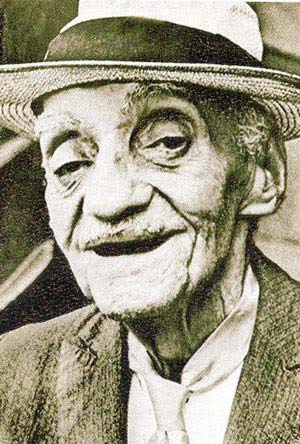
Cosme de Farias would say “Na Bahia, quem rouba um tostão é ladrão. Quem rouba um milhão é barão” (“In Bahia, somebody who steals a nickel is a thief. Somebody who steals a million is a baron.”)
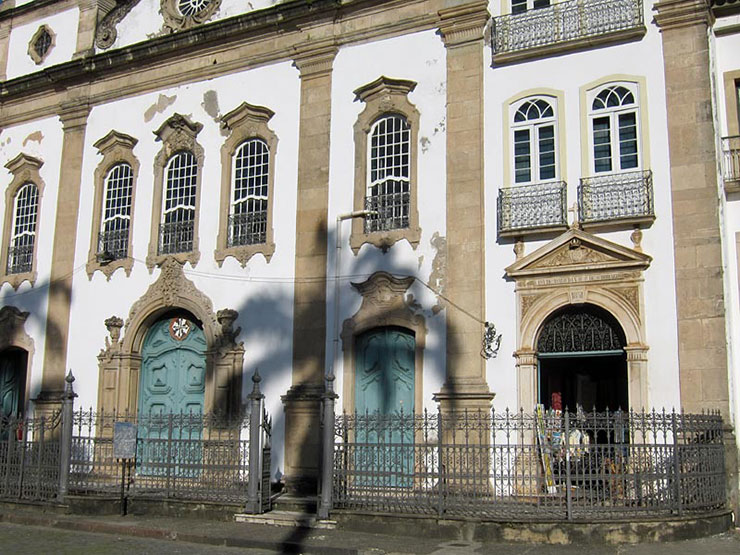
Mouraria — is an old-style central Salvador neighborhood with a name derived from “Moors”, a misnomer applied to immigrant Portuguese gypsies who camped in the area. The neighborhood is home to numerous bar/restaurants with tables on the streets and specializing in lambreta (mussels)…Thursdays, Fridays and Saturdays being the big nights. There’s also a relatively new restaurant in this neighborhood — Grappa Restobar on Praça Duque de Caxias — which is supposedly good and affordable and which hosts live choro some nights and which I’ll get to when I can.